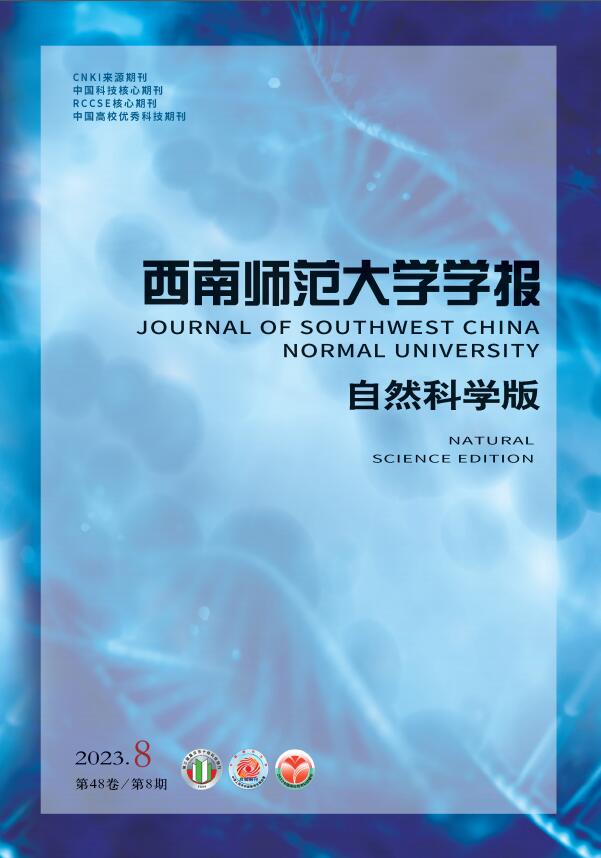-
本文主要考虑如下Kirchhoff方程:
其中Ω为
$ \mathbb{R}^{3}$ 中的有界区域,a,b,λ,μ>0,2 < q < 4.在一定条件下,我们利用极小作用原理得到了一个正的基态解.我们知道,Kirchhoff型方程最早由文献[1]提出.该方程是D’Alembert波方程的拓展与延伸.最近几年来,下面临界的Kirchhoff型方程解的存在性以及多重性引起了人们的广泛关注:
当N=3,μ=1,f(x,u)=|u|q-2u时,文献[2-3]研究了Kirchhoff方程正解的存在性和多重性.文献[2]研究了1 < q < 2的情况,并利用Nehari流形和Ekeland变分原理,证明了存在一个仅依赖于a的T4(a)>0,当a>0,0 < λ < T4(a)时,方程至少有1个正解.文献[3]研究了b足够小,1 < q < 2的情况,利用集中紧性原理得到2个正解,其中一个为基态解.
当N=4,f(x,u)=|u|q-2u时,文献[4]研究了2≤q<4的情况,在相应的条件下,利用变分方法和集中紧性原理得出了一个解.
文献[5]研究了方程(1)当1 < q < 2时解的情况,并得出相应的结论.
受到以上结论的启发,我们考虑当2 < q < 4时方程(1)解的情况.我们用λ1表示方程
的第一特征值,由文献[6]我们知道λ1>0,并得出如下的定理:
定理1 如果a≥0,b>0,2 < q < 4,则存在μ0,使得当0 < λ < bλ1时,对任意的μ>μ0,方程(1)有一个正的基态解,其中
$\mu_{0}=\frac{q S^{\frac{q}{2}}\left(\frac{\lambda}{a \lambda_{1}}\right)^{\frac{q}{2}}}{|\Omega|^{\frac{6-q}{6}} g(R)} $ .注1 众所周知,当a=0,b>0时,方程(1)被称为退化的Kirchhoff型方程.根据后文定理1的证明,可以知道存在一个μ0,使得当0 < λ < bλ1时,对任意的μ>μ0,方程(1)有一个正的基态解.本文是对文献[5]的补充.
一般地,我们记Sobolev空间H01(Ω)中的范数为
测度空间Lp(Ω)中的范数为
我们知道
$H_0^1(\Omega )↺{L^p}(\Omega )(1 \le p \le 6) $ 是连续的,当1≤p < 6时嵌入是紧的.令S为最佳Sobolev常数,即对任意的u∈H01(Ω),定义
如果u∈H01(Ω),且对任意的ϕ∈H01(Ω),都有
则我们称u为方程(1)的弱解.我们将用极小作用原理得出方程(1)的一个正基态解.其它符号和术语参见文献[7-11].
引理1 能量泛函I在H01(Ω)中强制且下方有界.我们定义
$ m=\inf\limits _{u \in H_{0}^{1}(\Omega)} I(u)$ ,则m < 0.证 由已知条件我们知道0 < λ < bλ1,根据Poincaré不等式可以得到
对于每一个0 < λ < bλ1,根据Hölder不等式以及Sobolev不等式,有
因为2 < q < 4,0 < λ < bλ1,所以对任意的μ>μ0,能量泛函I在H01(Ω)中强制且下方有界.因此
是定义良好的.另一方面
令
$g(t)=\frac{a}{2} t^{2}-\frac{\lambda}{4 \lambda_{1}} t^{4} $ ,则存在常数$R=\left(\frac{a \lambda_{1}}{\lambda}\right)^{\frac{1}{2}} $ ,使得令
$\mu_{0}=\frac{q S^{\frac{q}{2}}\left(\frac{\lambda}{a \lambda_{1}}\right)^{\frac{q}{2}}}{|\Omega|^{\frac{6-q}{6}}} g(R) $ ,当μ>μ0时,经过计算可得m < 0.定理1的证明 根据m的定义,存在一个极小化序列
$ \left\{u_{n}\right\} \subset H_{0}^{1}(\Omega)$ ,使得$ \lim\limits _{n \rightarrow \infty} I\left(u_{n}\right)=m<0$ .因为I(|un|)=I(un),所以可以直接假设un≥0对于Ω中的几乎每一个x都成立.这个时候可以取一个子列,仍然用{un}来表示,则当n→∞时,存在一个u*≥0,满足首先,可以断言un→u*在H01(Ω)中成立.一般地,我们令ωn=un-u*,只需要证明当n→∞时,‖ωn‖0.令
$l=\lim\limits _{n \rightarrow \infty}\left\|\omega_{n}\right\| $ .从(3)式可以得到:因此,从(4)-(7)式,我们可以得到
当n→∞时,如果l≡0,则在H01(Ω)中un→u*.如果l>0,我们可以推断出I(u*) < m,这就和m的定义相矛盾.因此l≡0.也就是说我们的论断成立,并且I(u*)=m.
接下来要证明u*是方程(1)的解.
明显地,因为I(u*)=m < 0,我们可以得到在Ω中u*(x)≢0.又因
$I\left(u_{*}\right)=\inf\limits _{u \in H_{0}^{1}(\Omega)} I(u) $ ,因此对于所有的ϕ∈H01(Ω)以及$t \in \mathbb{R} $ ,我们有同样地,该不等式对任意的-ϕ也成立,因此
对所有的ϕ∈H01(Ω)都成立,所以u*的确是方程(1)的一个解.
最后,我们可以断言u*是正基态解.事实上,取ϕ=u*,从(8)式可以得到
因为u*≥0且u*≢0,由强极大值原理,我们可以得到
整理后可以得到
$ I\left(u_{*}\right)=m=\inf\limits _{u \in H_{0}^{1}(\Omega)} I(u)$ ,因此u*是方程(1)的正基态解.
Existence of a Positive Ground State Solution for a Class of Asymptotically 3-Linear Kirchhoff-TypeEquations
- Received Date: 09/10/2018
- Available Online: 20/04/2019
-
Key words:
- Kirchhoff equations /
- ground state solution /
- the least action principle /
- the variational methods
Abstract: In this paper, we have mainly studied a class of asymptotically 3-linear Kirchhoff-type equations by variational method. Using the principle of minimal action, the existence of non-zero and non-negative solution is obtained. Finally, a positive ground state solution is obtained by using the strong maximum principle.






 DownLoad:
DownLoad: